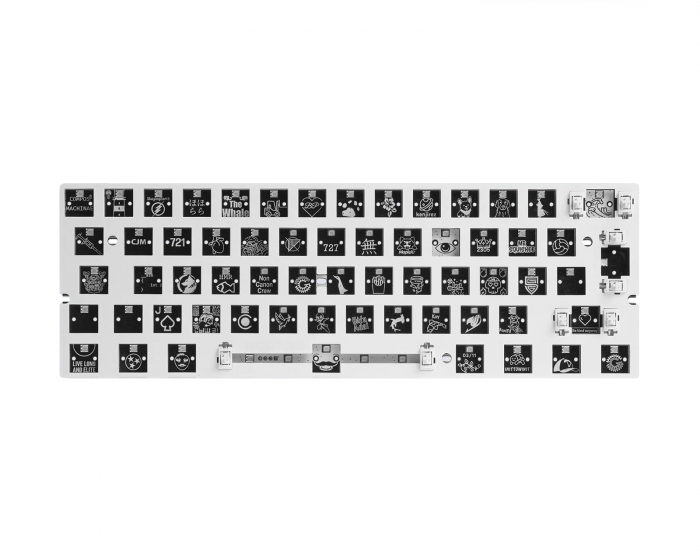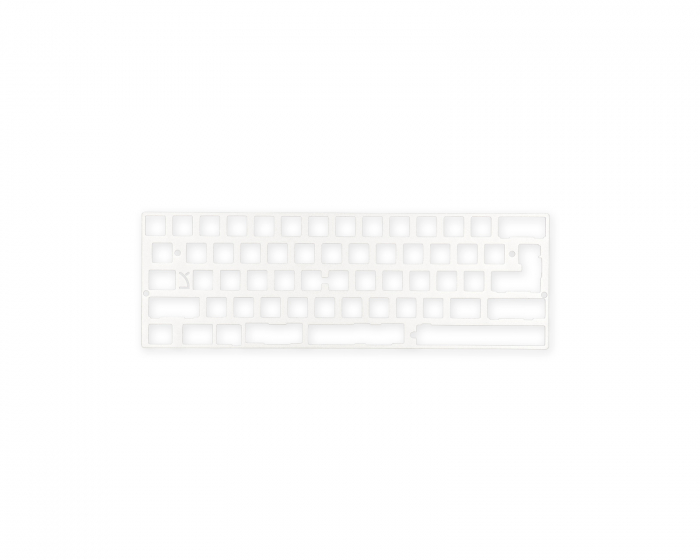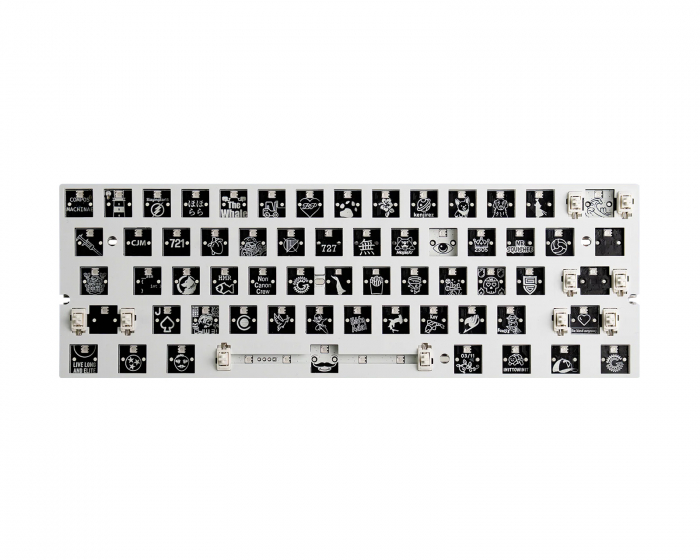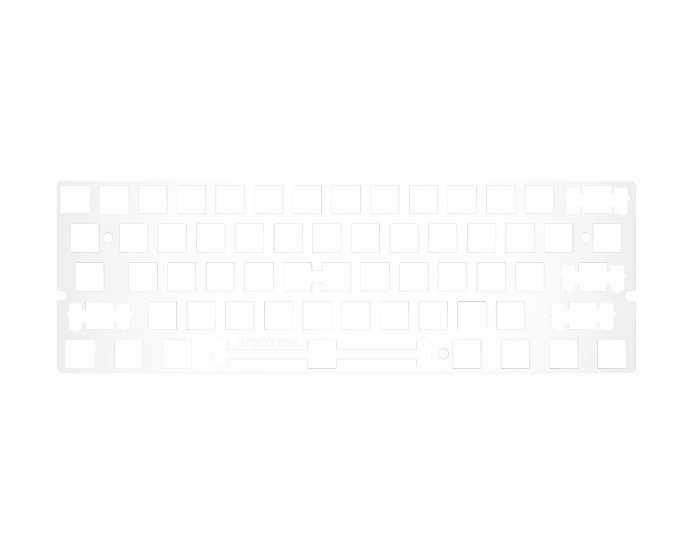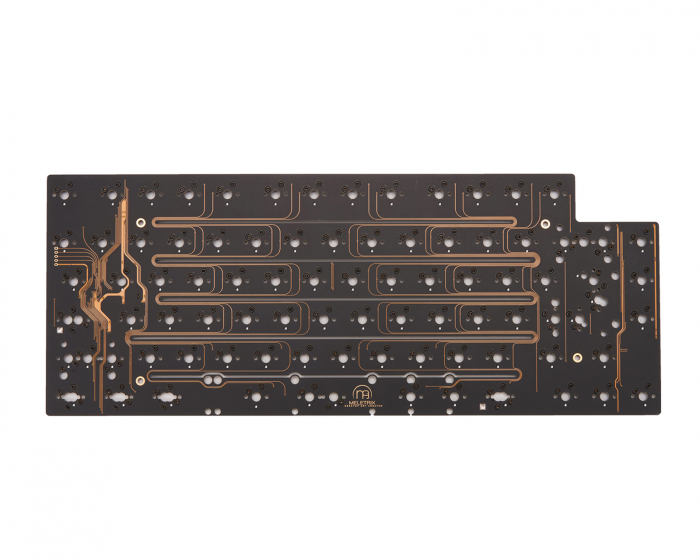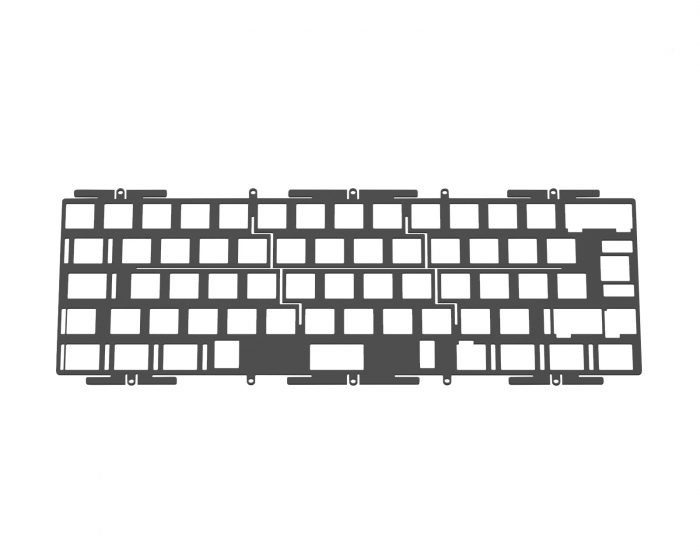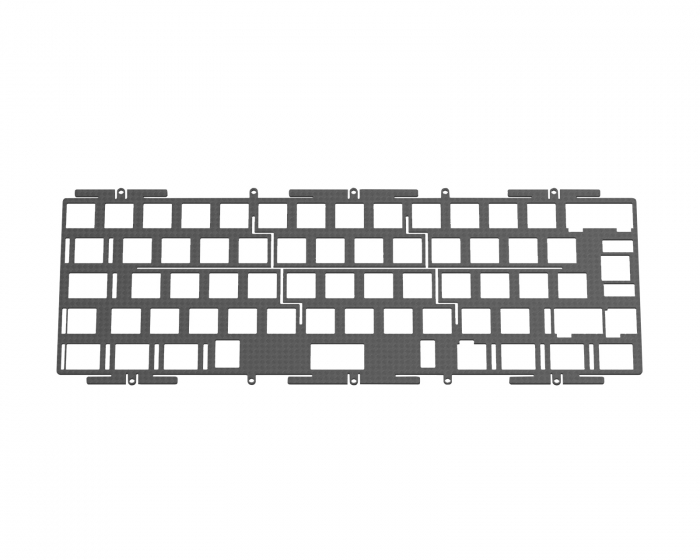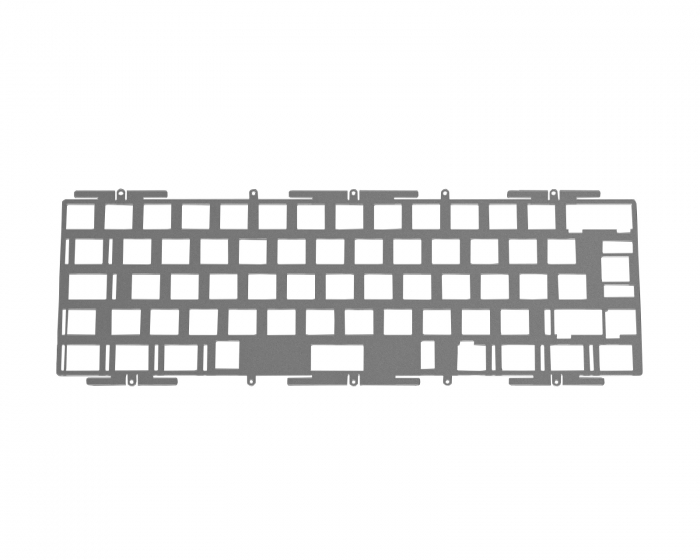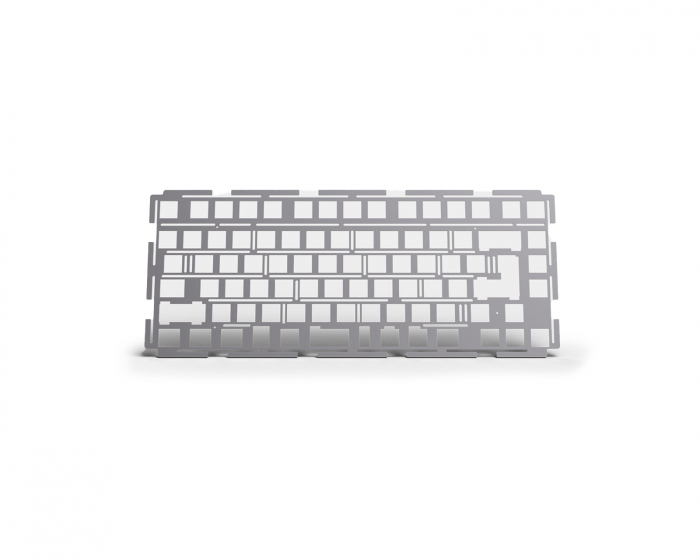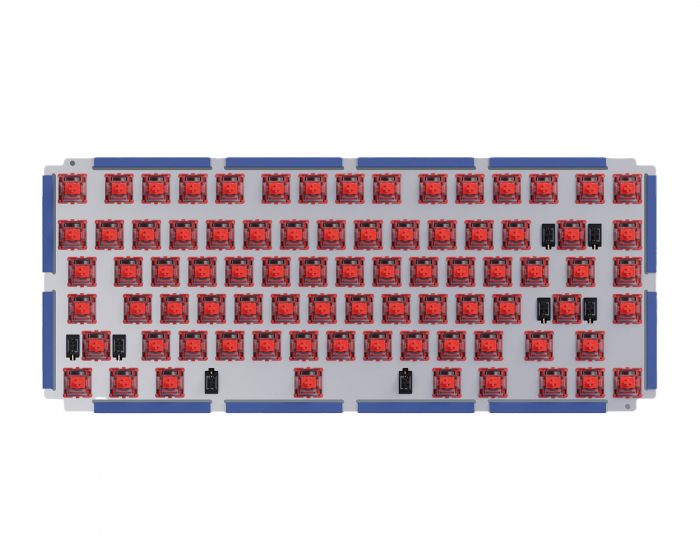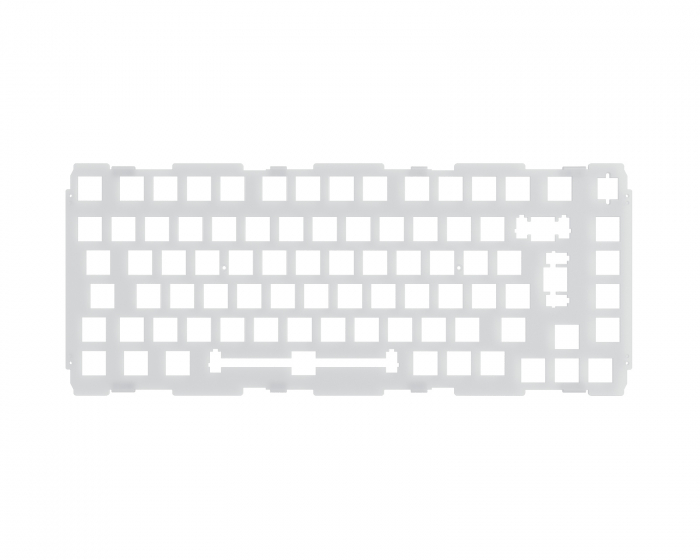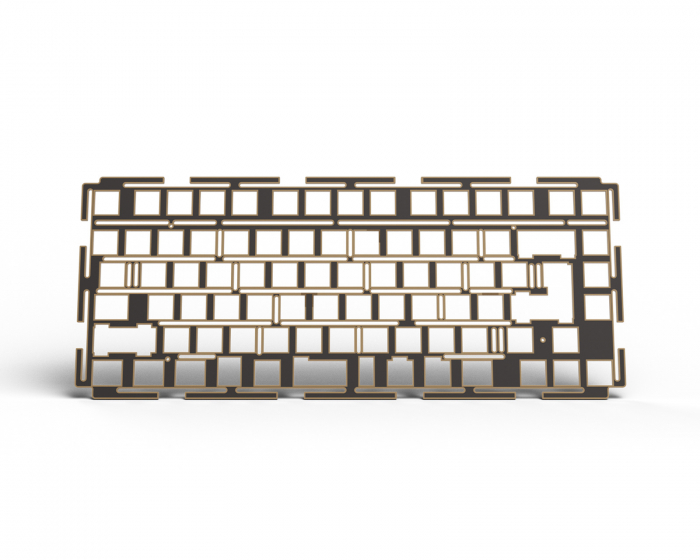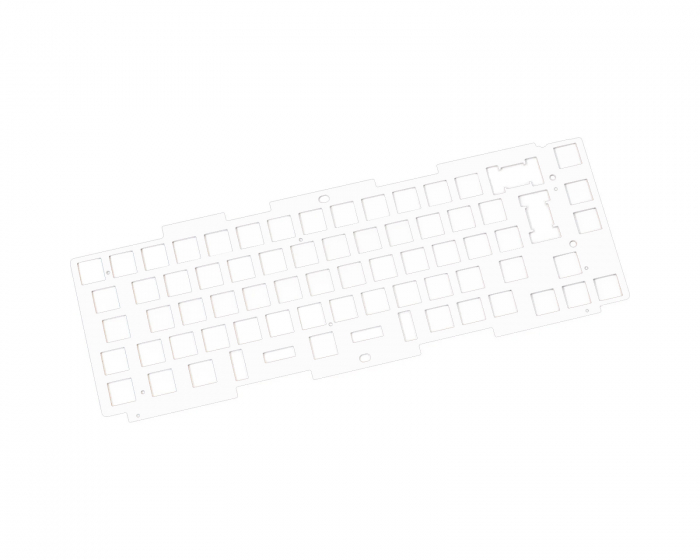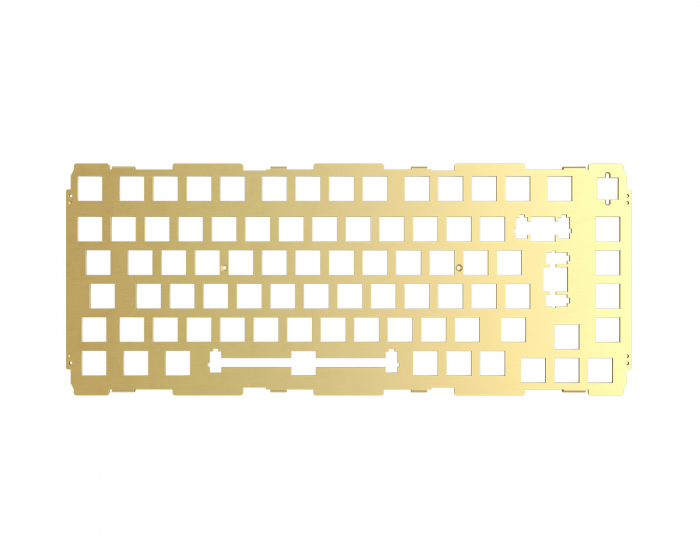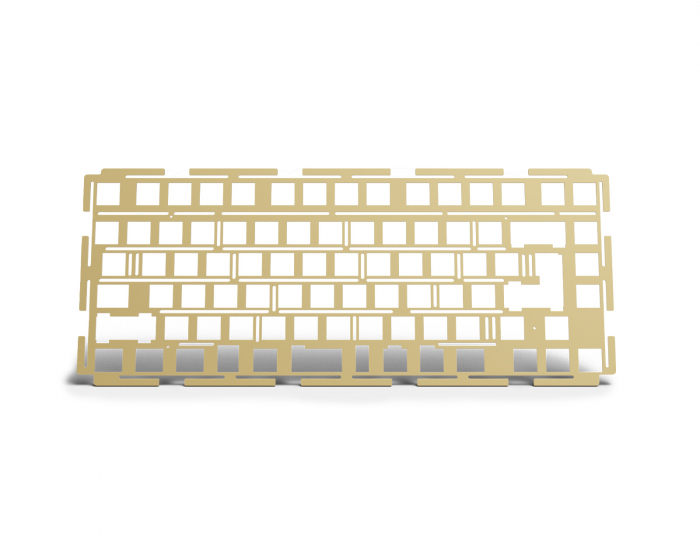Plates & PCB
In a world of mechanical keyboards, the possibilities for customisation are endless. From choosing the perfect keys to fine-tuning the sound and feel, you can create a keyboard that's completely unique to you. An important part of this customisation process is the choice of "plate" and "PCB", two components that form the basis of your keyboard. A "plate", also called a mounting plate, is a thin metal or plastic plate that sits between the keys and the PCB. The primary function of the plate is to provide stability and rigidity to the keyboard. It keeps the keys firmly in place and prevents them from bending or moving when you type. Different materials and designs of the plate can affect the feel and sound of the keyboard. For example, a brass plate gives a stiffer and more responsive sound, while an aluminium plate gives a softer and more cushioned sound.
"PCB", or Printed Circuit Board, is the heart of the keyboard. It's a thin board with built-in circuitry that records keystrokes and sends them to your computer. The PCB is connected to the board and the keys are mounted directly on it. As with boards, there are different types of PCBs with different functions and layouts. Some PCBs have support for RGB lighting, while others offer different connectivity options or support for programming keys. The choice of board and PCB is crucial for creating the perfect custom keyboard. They influence not only the keyboard's feel and sound, but also its functionality and appearance. Before choosing boards and PCBs, it's important to think about what type of keyboard you want to build, what layout you're going for, and what features are important to you.
There is a wide range of boards and PCBs available on the market, from simpler and cheaper options to more advanced and expensive models. Some manufacturers even offer 'kits' containing both the board and the PCB, which can be a good option for first-time buyers. Whether you're a seasoned keyboard enthusiast or just starting to explore the world of custom keyboards, choosing a plate and PCB is an important step in the process. By understanding the different options and what's important to you, you can create a keyboard that not only looks great, but also feels and functions just the way you want it to.
"PCB", or Printed Circuit Board, is the heart of the keyboard. It's a thin board with built-in circuitry that records keystrokes and sends them to your computer. The PCB is connected to the board and the keys are mounted directly on it. As with boards, there are different types of PCBs with different functions and layouts. Some PCBs have support for RGB lighting, while others offer different connectivity options or support for programming keys. The choice of board and PCB is crucial for creating the perfect custom keyboard. They influence not only the keyboard's feel and sound, but also its functionality and appearance. Before choosing boards and PCBs, it's important to think about what type of keyboard you want to build, what layout you're going for, and what features are important to you.
There is a wide range of boards and PCBs available on the market, from simpler and cheaper options to more advanced and expensive models. Some manufacturers even offer 'kits' containing both the board and the PCB, which can be a good option for first-time buyers. Whether you're a seasoned keyboard enthusiast or just starting to explore the world of custom keyboards, choosing a plate and PCB is an important step in the process. By understanding the different options and what's important to you, you can create a keyboard that not only looks great, but also feels and functions just the way you want it to.


